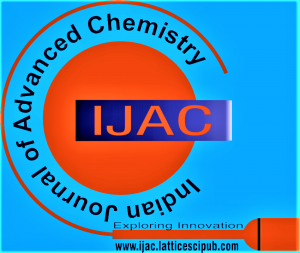![]()
Synthesis, Spectroscopic Characterizations, Antimicrobial, Anticancer & Anitoxidant Activities, Molecular Docking and DFT Calculations of Noval Zinc (II) Complex of 2- (Benzoylamino)-3-Sulfanylpropanoic Acid
Mohseen Ahmed1, Reema Chand2, Bibhesh K. Singh3
1Mohseen Ahmed, Scholar, Department of Chemistry, M.B. Govt. P.G College, Haldwani, Nainital (Uttarakhand), India.
2Reema Chand, Scholar, Department of Chemistry, M.B. Govt. P.G College, Haldwani, Nainital (Uttarakhand), India.
3Prof. Bibhesh K. Singh, Department of Chemistry, Govt. Degree College, Nandasain, Chamoli (Uttarakhand), India.
Manuscript received on 22 August 2025 | Revised Manuscript received on 03 October 2025 | Manuscript Accepted on 15 October 2025 | Manuscript published on 30 October 2025 | PP: 17-28 | Volume-5 Issue-2, October 2025 | Retrieval Number: 100.1/ijac.B203205021025 | DOI: 10.54105/ijac.B2032.05021025
Open Access | Ethics and Policies | Cite | Zenodo | OJS | Indexing and Abstracting
© The Authors. Published by Lattice Science Publication (LSP). This is an open-access article under the CC-BY-NC-ND license (http://creativecommons.org/licenses/by-nc-nd/4.0/)
Abstract: The complex with zinc (II) of Ligand (2- (benzoylamino)-3-sulfanylpropanoic) acid was made and analyzed using FT-IR, UV-visible, mass spectrometry, 1H NMR, 13C NMR, SEM and powder XRD. DFT calculations were also used to detect the electronic properties & structural stability. The antimicrobial investigation demonstrated that the zinc (II) complex had better bacterial killing action against E. coli (MIC: zinc (II) complex > Ciprofloxacin > Ligand) and antifungal action against A. niger (MIC: zinc (II) complex > Ligand > Amphotericin B). And the Zn (II) complex was more antioxidant active than the free ligand in the DPPH assay, as evidenced by its lower IC 50 (~420 0). Molecular docking experiments have indicated a better binding affinity of the zinc (II) complex with major antioxidant, antimicrobial, and enzyme inhibitory proteins compared to the free ligand. The anticancer effect of the Zn (II) complex on MCF-7 cells was demonstrated to be stronger than that of the free ligand in the MTT assay, revealing that the Zn (II) complex is suitable for further development as a drug. Docking of 3D ribbon structures was used to confirm these interactions. The improved stability and electronic features of the complex, due to zinc coordination, explain the increase in its activity.
Keywords: Metal Amide Complexes, Amino Acids, Molecular Modelling, Molecular Docking, DFT, Spectroscopic Analysis, Antimicrobial Activities.
Scope of the Article: Applied Chemistry
